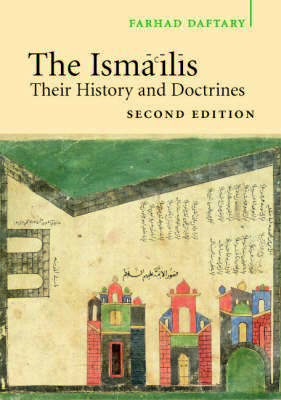The Ismāʿīlīs represent the second largest Shīʿī Muslim community after the TwelversSee Ithna’asharis., and are today scattered throughout more than twenty-five countries in Asia, the Middle East, Africa, Europe and North America. The second edition of this authoritative book traces the history and doctrinal development of the Ismāʿīlīs from their origins in the formative period of Islam to the present day, a period of more than twelve centuries. It is the first comprehensive synthesis of the results of modern scholarship in Ismāʿīlī studies and draws on numerous primary sources on the subject, including the Ismāʿīlī manuscripts which have only recently become available. All the major phases of Ismāʿīlī history are covered, including the pre-Fāṭimid period, the Fāṭimid ‘golden age’, the Ṭayyibī-Mustaʿlī period and the history of the Nizārī Ismāʿīlīs of Persia and Syria before the Mongol invasions. The final part traces the history of the modern Ismāʿīlīs, particularly the socio-economic progress of the Nizārī communities. The new edition has been thoroughly revised and incorporates new material, an expanded bibliography and new illustrations. It will be invaluable reading for students of Islamic and Middle Eastern history.
Illustrations and Maps
Foreword by Wilferd Madelung
Preface to the First Edition
Preface to the Second Edition
Note on the Text and Abbreviations
1. Introduction: Progress in the Study of the Ismāʿīlīs
2. Origins and Early Development of Shīʿīsm
3. Early Ismāʿīlīsm
4. The Fāṭimid Period until 487/1094: dawlaA state or dynasty. Also used to refer to the domain of politics (siyasa). and daʿwaLit. ‘summons’, ‘mission’ or invitation to Islam. Amongst Shi’i Muslims, it was the invitation to adopt the cause of the Imamat. It also refers more specifically to the hierarchy of…
5. The Later Fāṭimids and Mustaʿlian Ismāʿīlīsm
6. Nizārī Ismāʿīlī History during the Alamūt Period
7. The Post-Alamūt Centuries and Modern Developments in Nizārī Ismāʿīlī History
Genealogical Tables and Lists
Glossary
Notes
Select Bibliography
Index
‘… magisterial and readable … an impressive survey … there are, in addition, valuable genealogical tables and lists, and a glossary … a standard text for all students and scholars.’
– Ian Richard Netton, The Times Literary Supplement
‘… this book … breaks new ground in a most gratifying synthesis … every library of Islamic Studies will want to have this book … Daftary’s work is as clear and comprehensible in style as a book on this subject could be and makes very agreeable reading, with nuggets of valuable information in every chapter … a major and fascinating study.’
– John Alden Williams, Middle East Journal
‘… a massively documented reference for all phases of the long, complex history of the IsmailisAdherents of a branch of Shi’i Islam that considers Ismail, the eldest son of the Shi’i Imam Jaʿfar al-Ṣādiq (d. 765), as his successor. … an impressively thorough account and a major contribution to Ismāʿīlī studies … it will be the standard reference on this subject as a whole.’
– Paul E. Walker, Journal of the American Oriental Society
‘Vast in scope as well as in size, using a wide range of sources and dealing with an exceedingly complex topic in a scholarly fashion, Dr Daftary’s study of the Ismāʿīlīs will be much consulted in the future as an invaluable source of reference.’
– Robert Irwin, Journal of the Royal Asiatic Society
‘Daftary’s book is a landmark on Ismāʿīlī historical studies; it will be the principal source of reference on the subject for years to come.’
– David O. Morgan, History
Farhad Daftary is Associate Director and Head of the Department of Academic Research and Publications at the Institute of Ismaili Studies. He is a consulting editor of Encyclopaedia Iranica as well as the general editor of the Ismaili Heritage Series and the Ismaili Texts and Translations Series. An authority on Ismaili history, Dr Daftary’s publications include The Assassin Legends: Myths of the Ismaʿilis (1994), A Short History of the Ismailis (1998), Ismaili Literature: A Bibliography of Sources and Studies (2004) and Ismailis in Medieval Muslim Societies (2005). Dr Daftary’s books have been translated into Arabic, Persian, Turkish, Urdu and numerous European languages.

